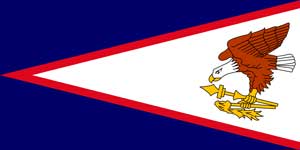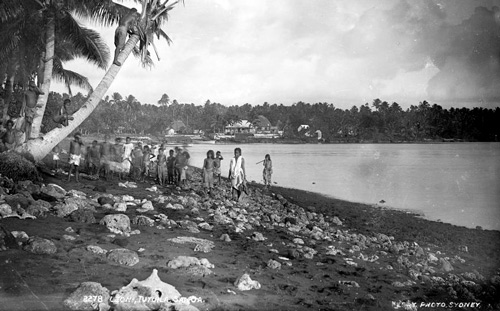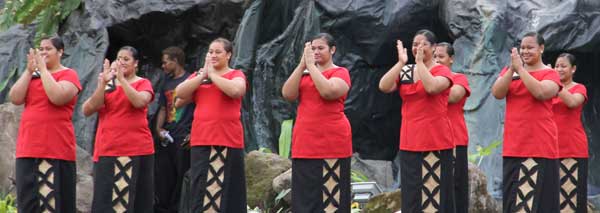Map
Flag

Quick facts
Official Name: American Samoa
Indigenous Peoples: Samoan (Tagata Māo‘i)
Official Languages: Samoan (Gagana fa’a Sāmoa or Gagana Sāmoa) and English
Political Status: Unincorporated unorganized territory of the United States
Capital: Pago Pago
Population: 67,000 (2009 est.)
Greeting: Talofa
History and geography

American Samoa, located in the South Pacific Ocean, southeast of Samoa, consists of five main islands and two coral atolls. The largest and most populous island is Tutuila, with the Manuʻa Islands, Rose Atoll, and Swains Island also included in the territory. American Samoa is part of the Samoan Islands chain, located west of the Cook Islands, north of Tonga, and some 300 miles south of Tokelau. To the west is the Wallis and Futuna group. The total land area of American Samoa is 199 sq km (76.8 sq mi).
Polynesians first migrated to the Samoan Islands more than 3,000 years ago. Samoans had contact with Fijians and other Pacific Islanders according to traditional lore. In 1722, Dutch explorer Jacob Roggeveen became the first European to visit Samoa, but for most of the 18th century European influence was limited to sometimes trading with the ships that passed through the islands. British missionaries arrived in the 1830s and converted many Samoans to Christianity. Pirates and whalers sailing in the Pacific were among the first Europeans to visit Samoa. By the mid-19th century, Pago Pago was one of the prime whaling ports in the Pacific. By the early 1800s, European traders made frequent stops at these islands, some settled there and established their own communities and laws. For a long time the two groups, natives and settlers, lived in peace with one another.
US influence in Samoa began in 1872 when a US Navy Commander met with Tutuila’s Chief Manuma to establish a naval harbor in Pago Pago. By the end of the century, Britain, Germany and the US were engaged in a power struggle to control the Islands. American Samoa became a US territory by a treaty with Great Britain and Germany in 1899 when the Samoan islands were separated politically into Western Samoa and American Samoa. Local Polynesian chiefs gave up their claims to the islands in 1900 and 1904. American Samoa became even more important to the United Stated during World War II, when Pago Pago was a naval base and staging point for the Navy offense in the Pacific.
The islands were run by the US Navy until 1951 when US President Harry Truman transferred responsibility for American Samoa to the US Department of the Interior. A new constitution was drafted in 1960, and in 1978, the first election took place. Today, schools have been built, roads paved, housing expanded and a new airport constructed. About a third of people from the islands work for the American Samoan government and others work in the fishing and canning industry. As it was in ancient times, the land is still communally owned by most families living in rural areas. They maintain a small amount of taro and banana plantations for their families.
Arts and culture

Samoans are well known as sailors, boat builders and storytellers.
Samoans also make a traditional barkcloth (tapa), called siapo, which is beaten mulberry bark with pictures painted on it. Using a natural brown dye, pictures of fish and flowers are painted on with skill and precision learned by watching the elders. Others use siapo to make clothing as well as decorations for homes. Mats, ornaments, jewelry and hair accessories are made from natural island materials like seashells and coconuts.
Scottish and Irish cultural influences, as well as some influences from Asian cultures, are evident in American Samoa. Some Samoan artists have excelled internationally in music and film.
